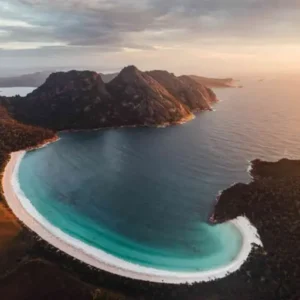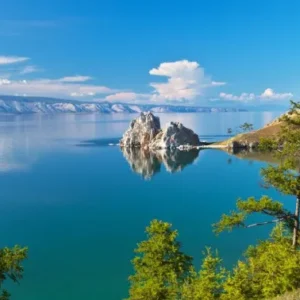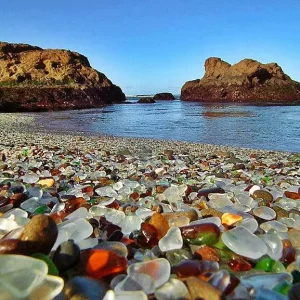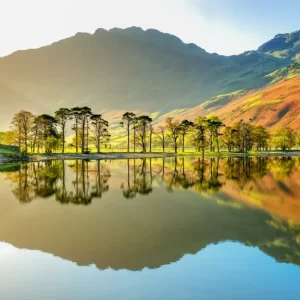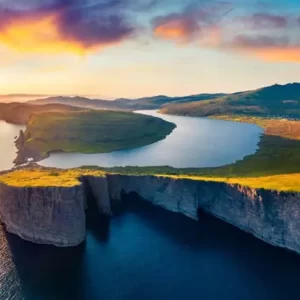Tumpak Sewu, also known as Coban Sewu, is located in eastern Java, Indonesia. This breathtaking natural wonder features a series of cascading waterfalls arranged in an almost perfectly semi-circular formation—so flawless it’s hard to believe it’s real.
>> The Korowai people: The only tribe in the world that lived in treehouses in Indonesia
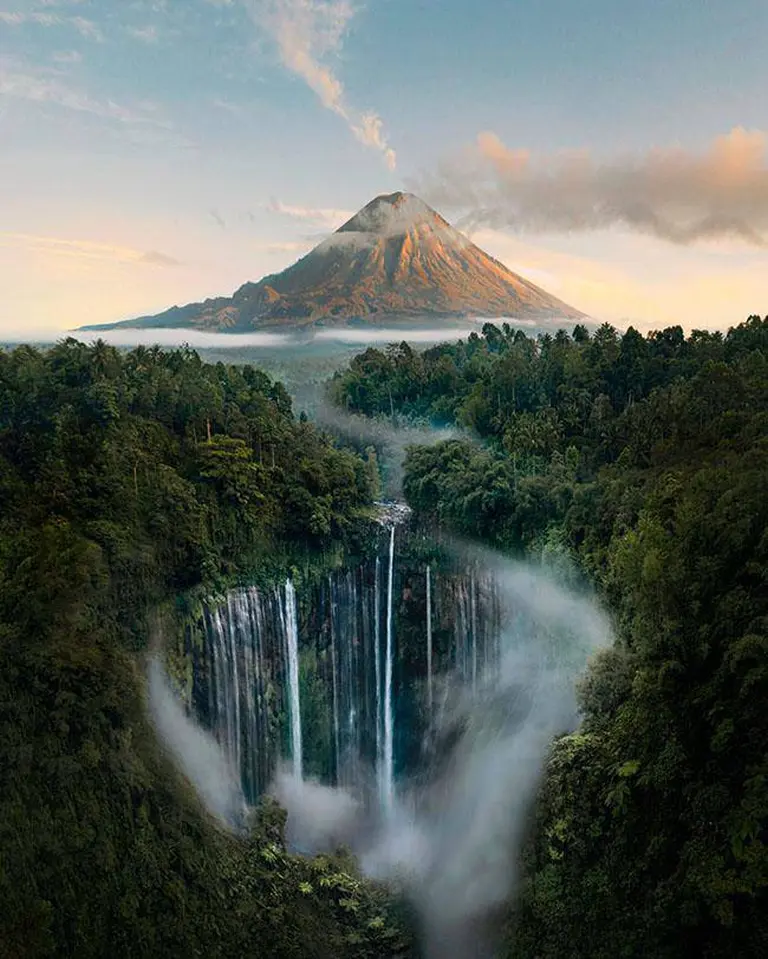


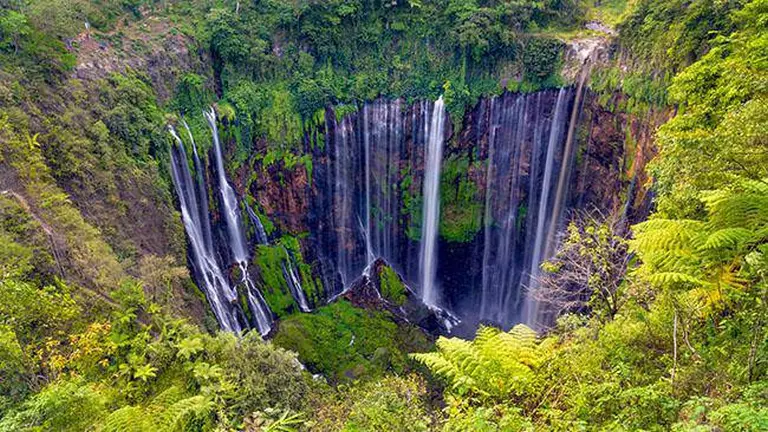
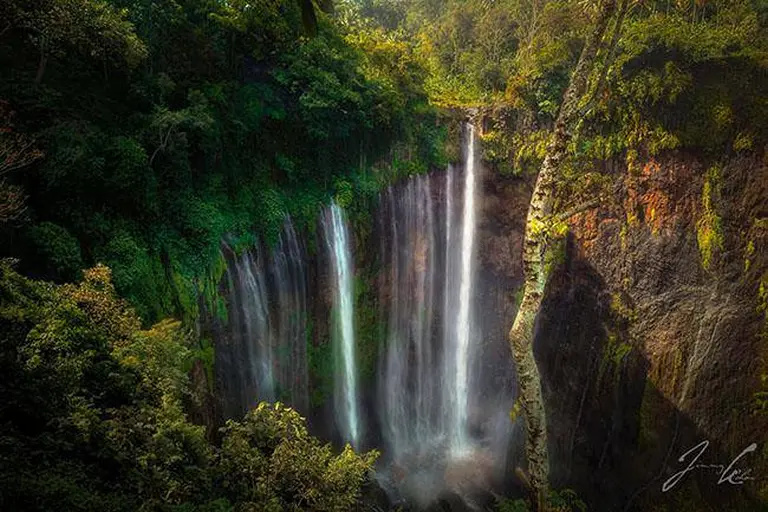
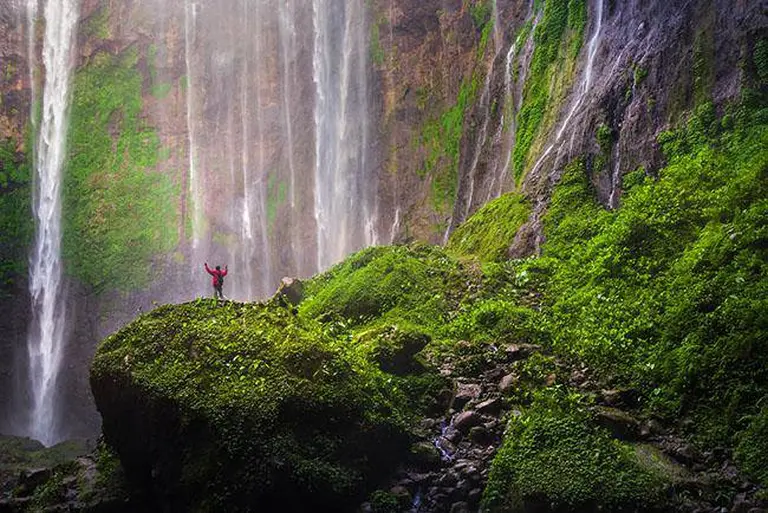
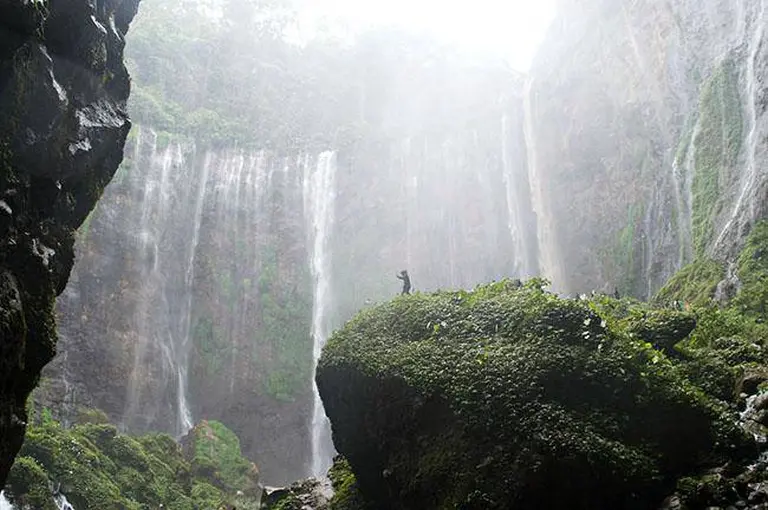

>> Sanur beach – The ideal family-friendly spot in Bali
FAQ
What is Tumpak Sewu, and where is it located?
Tumpak Sewu, which translates to “a thousand waterfalls,” is a jaw-dropping natural wonder located on the border between Lumajang and Malang Regencies in East Java, Indonesia. Also known as Coban Sewu, this waterfall is famed for its unique semi-circular formation, creating the illusion of hundreds of cascading falls plunging in unison into a lush jungle basin.
Why is it called a “semi-circular” waterfall?
Unlike most waterfalls that flow in a straight vertical line, Tumpak Sewu wraps around a steep cliff in a horseshoe shape, making it look like a watery amphitheater from above. This rare formation is created by multiple streams flowing off the edges of a caldera-like cliff, surrounding visitors in a surreal 180-degree curtain of water.
How tall is Tumpak Sewu?
The waterfall is approximately 120 meters (393 feet) tall, making it one of the highest waterfalls in Java and among the most scenic in all of Southeast Asia.
What makes Tumpak Sewu so unique compared to other waterfalls?
- Its semi-circular shape gives it an otherworldly visual effect that is incredibly rare.
- The jungle backdrop and mist-filled basin create a mystical, dreamlike environment.
- Visitors can view it from above or descend to the bottom for a more immersive experience—an adventure that feels like walking into a lost world.
How do I get to Tumpak Sewu?
To reach Tumpak Sewu, travelers typically start from Malang or Lumajang, two cities in East Java. From Malang, it’s about a 2- to 3-hour drive. From there, a short trek will lead you to both the upper viewpoint and the path down to the base.
Note: The descent to the bottom is steep and can be slippery, so good shoes and caution are essential.
Is it difficult to hike to the base of the waterfall?
Yes, the trek to the base is challenging but rewarding. It involves descending bamboo ladders, crossing streams, and navigating wet rocks. The journey can take about 30–45 minutes, and while it requires a moderate level of fitness, many say the effort is more than worth it.
When is the best time to visit Tumpak Sewu?
The dry season (May to October) is ideal, as trails are safer and water flow remains impressive. During the rainy season, the waterfall is at its most powerful but the descent becomes significantly more dangerous due to slippery conditions and rising water levels.
Are there other attractions nearby?
Yes! Tumpak Sewu is near Mount Semeru, Java’s tallest volcano, and Goa Tetes, a stunning cave waterfall that can be explored along the river near the base. Many visitors plan a multi-stop nature adventure in the area.
Can I fly a drone or take photos?
Absolutely—Tumpak Sewu is a photographer’s dream. Drone shots from the top viewpoint showcase the stunning geometry of the falls. Just ensure you follow local drone regulations and respect the natural environment.
Is Tumpak Sewu safe to visit?
While the top viewpoint is relatively safe and accessible, the trail to the base involves natural hazards such as slippery rocks, narrow paths, and strong currents. It’s best to go with a local guide if you’re unfamiliar with the area or are traveling during the wet season.
Why is Tumpak Sewu gaining popularity?
Social media, especially Instagram and YouTube, has played a big role in spotlighting this once-hidden gem. The combination of its awe-inspiring symmetry, jungle atmosphere, and raw power has made it a bucket-list item for travelers seeking untouched natural beauty in Indonesia.
>> Living with the Dead in Indonesia: A sacred bond beyond life
Tumpak Sewu isn’t just a waterfall—it’s a natural cathedral of cascading water, hidden deep in the jungles of East Java. Whether you view it from the top or brave the hike to the base, you’ll leave feeling like you’ve stepped into a mythical world carved by the elements over millennia.

